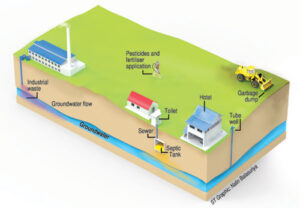
Sri Lanka approves hybrid renewable energy project
Sri Lanka’s Cabinet of Ministers has given the green light to the development of a hybrid renewable energy project in Punarin, which includes 240 megawatts (MW) of wind and 800 MW of solar.
The move is in line with the Sri Lankan government’s plans to significantly expand renewable energy sources’ share of the nation’s power mix.
The Sri Lanka Sustainable Energy Authority (SLSEA) has identified the northern regions of the country as a suitable location to construct wind and solar power plants.
Under the proposal, the construction of the hybrid energy park will be built in three phases spanning two years.
The government recently unveiled its policy to add a considerable amount of electricity to the national grid through renewable energy sources.
Ceylon Electricity Board has set a target to increase electricity produced by renewables from the 10 per cent generated today, to 17 per cent by the end of 2019.
In March, the Cabinet announced the nation will issue an international tender to set up a 100 MW floating solar plant on the Maduru Oya Reservoir, in the east of the country.
Since then, Sri Lanka has announced it will allocate LKR350 million (US$2.29m) in the 2017 budget to implement its green building policy.
Source – 25/05/2017,Climate Action, See more at – http://www.climateactionprogramme.org/news/sri-lanka-approves-hybrid-renewable-energy-project
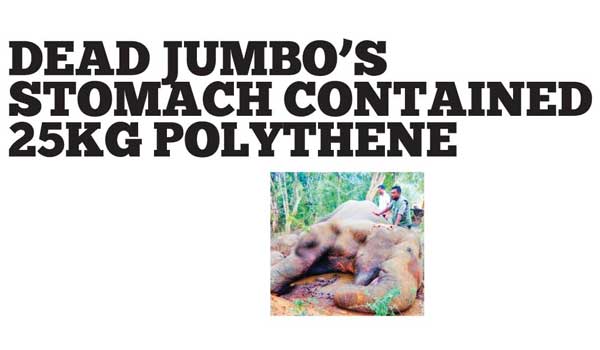
Dead Jumbo’s stomach contained 25kg polythene
The stomach of a dead wild elephant was found to contain over 25 kg of polythene, according to Wild Life officials in the Polonnaruwa District.
A wild elephant was found dead on the main road between Polonnaruwa and Batticaloa yesterday (24). It had fallen on a garbage dump which contained polythene bags and plastic bottles.
The Wild Life officials, who went to the scene to examine the carcass of the elephant, carried out an autopsy with the help of a veterinary surgeon, sources said.
The surgeon who had performed the autopsy at the spot where the animal had collapsed found polythene weighing 25kg in its stomach sources added.
Further examination confirmed that the dead elephant was 30 years old.
The Wild Life officials said that due to garbage being dumped on the roadside wild elephants come out of the forests to eat the waste.Despite the elephant –human conflict in the Eastern Province having led to the death of elephants and humans on a large scale, the new phenomenon is the death of wild animals due to the consumption of polythene and plastic waste dumped on the roadsides in the jungle areas.
The Wild Life officials had also confirmed that in recent times nearly eleven elephants had died due to consuming the polythene and plastic waste dumped on the roadside.
Source – 25/05/2017,Ceylon Today, See more at – http://www.ceylontoday.lk/article20170401CT20170930.php?id=5204

World is home to ‘60,000 tree species’
There are 60,065 species of trees in the world, according to a comprehensive study of the world’s plants. Botanical Gardens Conservation International compiled the tree list by using data gathered from its network of 500 member organisations. It hopes the list will be used as a tool to identify rare and threatened species in need of immediate action to prevent them becoming extinct. Details of the study appear in the Journal of Sustainable Forestry. The data revealed that Brazil was the nation with the greatest number of tree species, home to 8,715 varieties.
Source – ITN News, Read more at – https://www.itnnews.lk/world-news/world-is-home-to-60000-tree-species/

Snail’s DNA secrets unlocked in fight against river disease ? 1617 readers have read this article !
Scientists have decoded the genome of a snail involved in the spread of a deadly parasitic disease.
They say the information will help in the fight against schistosomiasis, an infection caused by a parasitic worm that lives in streams and ponds.
The disease affects millions of people a year in sub-tropical and tropical regions.
More than 100 researchers from around the world have unlocked the DNA secrets of a snail that transmits the parasite.
They say it will help in the understanding of the snail’s biology, including new ways to stop the parasite spreading to people.
“Having the knowledge means we can progress at a much faster pace at understanding the disease and reducing the number of people infected,” said Dr Joanna Bridger of the University of Brunel, a co-researcher on the study.
The snail (Biomphalaria glabrata) is found in South America.
Related snails are responsible for transmitting the parasite in sub-Saharan Africa, where most cases occur.
People become infected when larval forms of the parasite – released by freshwater snails – penetrate the skin in contaminated water.
In the body, the larvae develop into adult worms, which live in the blood vessels and release eggs.
Some of the eggs are passed out of the body to continue the parasite’s lifecycle.
Others become trapped in body tissues, causing damage to organs.
There is no vaccine for schistosomiasis and current control measures involve mass administration of the drug, praziquantel.
Scientists now hope to develop new treatments, perhaps by disrupting the snail’s mating habits.
The information will also be useful in tracking snail populations that differ in how they transmit the parasites.
“This work provides several inroads for control of Biomphalaria snails to reduce risks of schistosome (re) infection of endemic human populations, an important component of the WHO strategy aimed at elimination of the global health risks posed by schistosomiasis,” said the researchers in the journal, Nature Communications.
The research was led by Prof Coen Adema from the University of New Mexico.
Several UK research teams were involved, including the universities of Brunel, Aberdeen, Aberystwyth, Westminster, Kingston, Oxford, and the Natural History Museum.
Source – Ceylon Today, See more at – http://www.ceylontoday.lk/article20170401CT20170930.php?id=5134
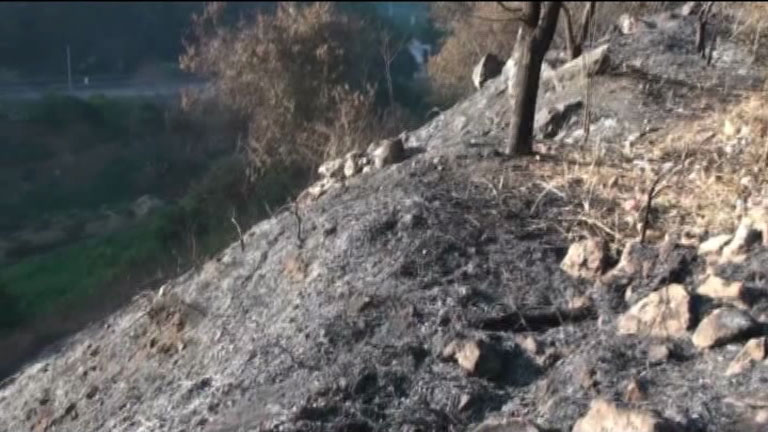
Waste dumping in Sanctuaries
The Department of Wildlife has requested the public to provide them with the information about people who dumped waste in sanctuaries. Our reporters said that the double bend area of Victoria Forest Reserve has been severely polluted by garbage dumping. Environmentalists point out that this could pollute Mahaweli water. Someone has also burnt plastic at the site. The Wildlife Department said that people in the area should be vigilant to minimize such incidents.
Source -20/05/2017, ITN News, see more at – https://www.itnnews.lk/local-news/waste-dumping-in-sanctuaries/

Wild elephant dies in fight with a tusker
A wild elephant has died following a clash between a tusker and an elephant at the Minneriya National Wildlife Park. The fight has broken out between the wild elephant named Netta Kota and the tusker identified as Wasamba. The fight between the wild elephant and the tusker has taken place at Palupitiya area of the Minneriya National Wildlife Park. The Wildlife officials said that a clash could have lasted for about one hour. They said that the left side and the eye of the wild elephant was severely injured. When the wild elephant fell down, the tusker had attacked him again. The Wildlife officials has chased away the tasker into the Wildlife Park but he has returned and attacked the fallen wild elephant again. They said that the wild elephant may have died due to the injuries caused to its stomach by the tusks.
Source – 21/05/2017, ITN News,See more at https://www.itnnews.lk/local-news/wild-elephant-dies-in-fight-with-a-tusker/
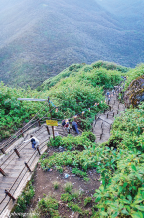
Sri Pada Turns Into A Dumping Ground
Many expressed concern last week after it was reported that more than a million plastic bottles were collected from Sri Pada area which was discarded by pilgrims who had travelled to Sri Pada (Adam’s Peak) for past few months.
Environmentalists point out that during months of May and December, some organisations collect garbage especially bottles and plastics from Sri Pada area. However, despite awareness campaigns the trend goes on.
Many are of the view that that though there are polices and guidelines especially by the state institutions like the Central Environmental Authority (CEA), but the enforcement is not satisfactory.
When contacted, Centre for Environmental Justice (CEJ) Executive Director Hemantha Withanage told The Sunday Leader that agencies such as CEA is responsible for plastics and polythene issue not only in Sri Pada but for the whole country.
He said that there was a cabinet appointed technical committee which he was part of and they produced guidelines and regulations to control and ban polythene and plastics.
Producer responsibility
He stressed: “There is no other way to stop this other than banning polythene and introduce extended producer responsibility where the producer would take the responsibility to recycle the bottles and e-waste etc.”
When it comes to plastic bottles and polythene, CEJ have filed action against the garbage gazette, asking for a scientific waste management policy and a mechanism.
“It should be based on zero waste policy. Earlier, we had 3R which is Reduce Reuse Recycle but now all developed countries promote zero waste. This means all waste should be treated as resources for another production process,” he stressed.
A CEA official said that they have limited resources. However, they are in the process of taking all relevant measures making sure for a cleaner environment and rich biodiversity.
He stressed that when it comes to the disposal of plastic bottles, it is a common problem worldwide. Millions of single-use bottles end up in landfill sites or in oceans and a very small proportion are recycled.
“It is the same in Sri Lanka, of course we have strict measures. There are shortcomings as usual when it comes to implementation,” he said.
World Heritage Site
Environmentalist, Dr. Ravindra Kariyawasam who is also Director of the Center For Environment and Nature Studies said that the road leading from Sri Pada to Nallathanni and the surrounding areas were declared as a World Heritage Site of UNESCO a few years back,
He says in other words there should be no construction or renovation without a valid reason and appropriate approvals from the authorities concerned, especially from the UNESCO committee.
It was declared as one of the UNESCO world heritage sites in Sri Lanka for the ecological and biological diversities which need to be protected and reserved without any harm being done to the site.
“Sri Pada has a lot of tourist attraction and was supposed to be protected by the government. But it is being damaged and threatened in the expectation of boosting the tourism industry in the country is not an appropriate plan by the government. Projects aren’t sustainable nor will they be a contributing factor to the tourism industry. The government needs to understand the reality before allowing such projects in such a holy place where people of all religions worship,” he said.
No private and domestic buildings were allowed in close proximity of Sripada for over several years and the government that needs to protect the place is trying to put up unnecessary constructions. The false claims of the developers should be seriously looked into, he noted. Some claim to provide facilities for the devotees who visit the place from various places all around the country and also to foreigners.
“According to the Flora and Fauna Act, they cannot even cut down a single tree in the site how can they clear an area of 99 acres for the construction? Who has the authority to allow such projects in a UNESCO protected site.”
Adam’s Peak is worshipped by all people of the country, the Sinhalese Tamils and Muslims by giving various names for the mountain and the sacred footprint. Adam’s Peak is important also as a watershed.
Precious stones
The districts to the south and the east of Adam’s Peak yield precious stones, emeralds, rubies and sapphires, one thing the island has been famous for. The development projects and the luxury hotels will endanger the sanctuary which is filled with plants and trees.
“We are not against building luxury hotels and cable wire cars to boost tourism in Sri Lanka but Sripada is a place for worship and a UNESCO world heritage site, the government should put in place immediate measures to stop the ongoing project and to conserve the reservation,” he added. He also told The Sunday Leader that they had been campaigning since 2001 from the days at Young Zoologists Association (YZA).
He also said that they had taken up the matter several times with Sabaragamuwa Pradeshiya Sabawa and with the then Minister of Environment and Natural Resources. A report in the British based The Guardian says that it’s estimated Americans throw away at least 50 million bottles every day. Every year, a UK household uses 480 plastic bottles, but only recycles 270 of them, according to Recycle Now, a campaign group funded by the government’s waste advisory group Wrap. A survey by Greenpeace found five out of six global soft drinks firms sold single-use plastic bottles weighing more than two million tones only 6.6 per cent of which was recycled plastic.
Recycling in Sweden, for example, is so effective that they have to import waste to turn into energy, but in most countries schemes are either less efficient or don’t exist at all.
By – Ifham Nizam
source – 21/05/2017,The Sunday Leader, See more at – http://www.thesundayleader.lk/2017/05/21/sri-pada-turns-into-a-dumping-ground/

‘Lichens: the coolest thing you never heard of’
Lichens: the coolest thing you never heard of’, a lecture presided by eminent Sri Lankan lichenologist, Dr. Gothamie Weerakoon, and world renowned lichen specialist Dr Pat Wolseley, scientific advisor to the Natural History Museum London, will concentrate on a scientific dissemination of their insights on the subject. The duo will be joined by National Geographic Young Explorer, Mathew Cicanese, a documentary artist who takes a special interest in small organisms, and human interactions with the environment. This lecture on May 27 at the BMICH, Orchid Room at 6.15 p.m. is a part of the environmental lecture series hosted by Dilmah Conservation.
Admission to the lecture is free and will be open to all.
Lichens exhibit a marked diversity that oftentimes goes unnoticed, even though these symbiotic colonies occupy a major swathe of the earth’s surface as they inhabit nearly every possible nook and crevice on the planet. These symbiotic associations are a curious case of mutually beneficial partnerships between fungus and an alga or cyanobacterium, or both; which function together almost as a single living individual. While these colonies act as carbon sinks, playing a pivotal role in decelerating the global warming process, they also respond to the minutest change in the environment making them crucial to the ecosystem as bioindicators.
The scientific community has shown a keen interest throughout into the study of the mechanisms of their existence and their ecological role, however, unlike the debate on climate change or the conservation of rainforests, and their rich biodiversity, it hasn’t yet grasped the imagination of the masses.
Dr. Gothamie Weerakoon, will be addressing this gap in the awareness regarding the ecological role of lichens through her lecture on Saturday. She is currently working alongside her team of specialists from the National Geographic Society on studying and discovering the plethora of lichens that are present in the tropical terrains of Sri Lanka.

Spource – 21/05/2017,The Sunday Times, See more at -http://www.sundaytimes.lk/170521/plus/lichens-the-coolest-thing-you-never-heard-of-240469.html

Bear necessities, the palu fruits
Tipsy black bear under a palu tree. (Pix by Ajantha Palihawadana)
For the black bear, there is no greater feast than palu fruits straight from the tree. This gastronomic delight makes the nocturnal creature forego its night time pursuits and get intoxicated by palu even during the day! “They are oblivious to the world outside and can be spotted in various positions under the palu trees, some even in yoga position,” says Ajantha Palihawadana, Head of the Responsible Trail, the eco-tourism arm of the Yala Adventure Resort.
Although the flowering season of palu begins at this time of the year and the fruits ripen from June to August, as Palihawadana observes, in the Yala National Park, ripened palu had been spotted since the second week of May this year. “In Yala we noticed a very early flowering season of the fruit this year, as early as February where bees were collecting nectar from the palu flowers.” Perhaps a sign of climate change as Palihawadana reflects, early fruiting means an unexpected lottery for the nocturnal black bear. “The Palu season is the best time to photograph the creature and at times they are seen nestled among the palu branches for hours and if the drought is prolonged, they eat the fallen berries under the trees which are fermented and become drowsy,” says Palihawadana who has captured the ‘tipsy’ bear and its footprints under the palu trees of Yala. The berry is also a staple for other fruit-eating creatures such as the giant squirrel, civet cat and the Gray langur, says the nature lover and researcher.
Botanically termed Manilkara hexandra in the Sapotaceae family, palu or Ceylon Iron Wood is found in abundance in the dry arid zones and along the sandy coast of the country. “Palu is one of the most important components of the vegetation of the ‘dry ever green forests’ in the country, notably in the North, East and the North Central. Yala, Bundala, Wilpattu, Kumana, Udawalawe, and Wasgamuwa National Parks are also well known for the tree . The tree is also prominent along the Southern coast,” explains Prof. Siril Wijesundara, Research Professor, National Institute of Fundamental Studies and former Director General of the Department of National Botanic Gardens. A chief factor of the ‘high canopy’ of these ‘dry ever green forests’, palu trees grow up to about 25-30 metres in height, he says.
Sought after by birds and wild beasts, palu when eaten in excess, could have an intoxicating effect on the two legged and the four. “Growing in the South, palu was part of our lives and I still recall being unable to open our eyes the next day, having been palu gluttons as the berry is believed to be containing ‘heaty’ properties when consumed in excess,” recollects Prof. Wijesundara.
The berry, found largely in the tropical Asian regions and predominantly in the Indian subcontinent, palu is a subject of serious horticultural research in India according to the Botanist. “We too should take a cue from the Indian experience,” maintains the scholar who notes that ripe berries are dried in open air and the dried fruit commercially promoted in India.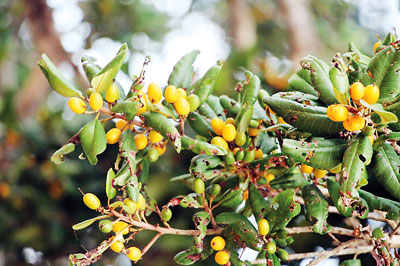
Claiming a ‘characteristic bark’ as Prof. Wijesundara illustrates, the palu tree is also renowned for its adaptations to mitigate water loss. “Palu bark is what is botanically termed a ‘fissured bark’, denoting a dark, thick texture. The leaves of the tree are thick and the edges are curved inwardly with a shiny surface and help prevent water evaporation.” The tree can also withstand coastal climatic hardships, says the Botanist. Rich in vitamins, palu is also renowned for its medicinal properties. “Similar to moona mal, which is used in oral care, especially for gum disease, palu too is a sought after herb, since both these plants share the same genus,” says Prof. Wijesundara. Palu is also a proven herbal remedy for dysentery.
The sudden decline of Palu in the South of the country is a matter of concern over which studies are underway, says Prof. Wijesundara. The research by Prof. Anoma Perera of the Botany Department of the Peradeniya University is still unravelling the exact causes for this sudden loss. “A multitude of factors comes into play. One of the key assumptions is the changes in the water table in the region with irrigation projects such as the Lunugamwehera Augmentation Programme impacting on the salinity levels of water,” explains Prof. Wijesundara.

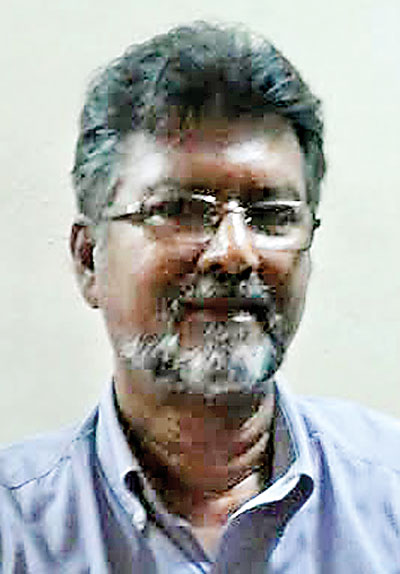

Illegal use of Colombo tube wells endangering people’s health
Colombo’s water table is highly compromised, and using this water via tube wells can lead to the public contracting any number of diseases, and even death, say CMC officials
By Kasun Warakapitiya
Despite warnings from the Colombo Municipal Council (CMC) to refrain from using tube well water obtained in Colombo city, small time hoteliers are said to be secretly making use of ground water.
CMC Chief Medical Officer Dr. Ruwan Wijeyamuni told the Sunday Times that they banned the sinking and use of tube wells within City limits due to the excessive pollution of water. He said that last year the CMC had raided several eateries which used ground water from illicit tube wells.
The CMC is able to detect if ground water is being used by examining the water bills of hotels and restaurants in their annual registration of eateries. “If any eatery is found using ground water, they will not be allowed to operate. We will cancel their licence,” Dr. Wijeyamuni said.
He said that food prepared using tube well water becomes contaminated, while plates washed with such water will, likewise, contaminate the food.
“The Colombo water table is very high up; therefore water can be reached after drilling to a depth of five to ten feet. Colombo is marshy land where water is collected very high in the soil, with little filtration, so it has various contaminants,” he said.
Dr. Wijeyamuni pointed out that in the dry zone, ground water reserves were purer, since they are found at a depth of over forty feet. But in Colombo the water body is polluted by septic leakage and drainage water.
He explained that over a hundred pathogens including types of bacteria, such as E. Coli, were discovered when samples of ground water were tested a few years back. Even discarded battery components including heavy metals such as Lead, Cadmium and Nickel are found in Colombo’s tube well water, as well as unknown viruses, fungi and worms.
“Ingesting polluted water can result in Typhoid fever, Hepatitis, fungal and bacterial infections, poisoning, worm infestations and even death,” Dr. Wijeyamuni cautioned. He added that the Colombo ground water should not be used even for bathing or washing clothes as this can lead to skin rashes, eczema, allergic reactions and eye infections.
CMC Analyst R.M.G.B Rajanayake said that the Colombo water table was contaminated due to industrial and commercial activity. He said that when the water was tested at the CMC laboratory they found Ammonia, Nitrates and Nitric components. The water was heavily mixed with sewage and garbage which had seeped underground.
Mr. Rajanayake pointed out that the water could even contain toxic waste and heavy metals, and therefore people should refrain from using Colombo groundwater.
Source – 21/05/2017, The Sunday Times, See more at – http://www.sundaytimes.lk/170521/news/illegal-use-of-colombo-tube-wells-endangering-peoples-health-240874.html








